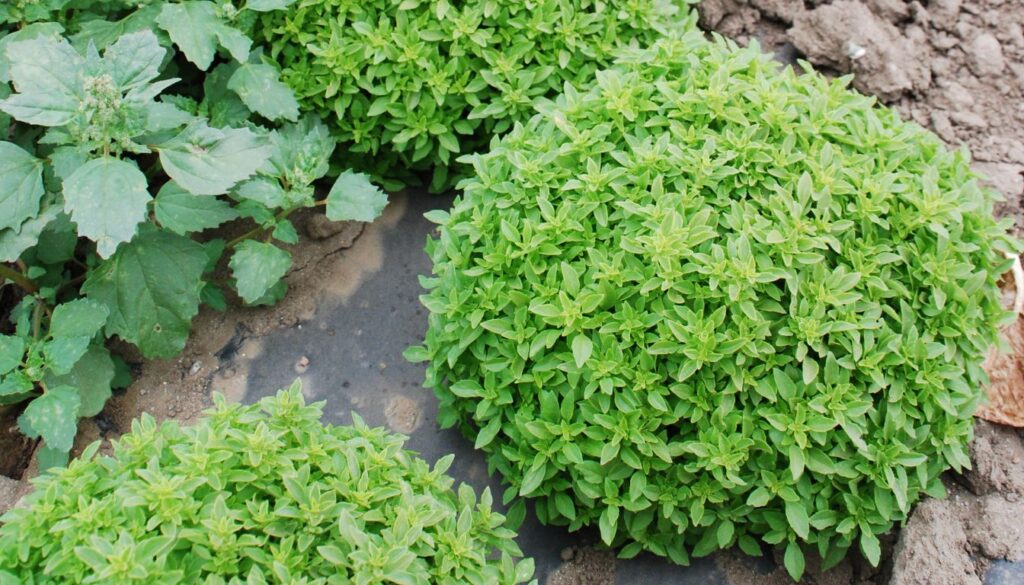Imagine stepping into your garden and being greeted by the vibrant, aromatic scent of fresh basil. A basil bush isn’t just a plant; it’s a culinary powerhouse that can elevate your dishes from ordinary to extraordinary. Whether you’re a seasoned chef or a weekend cook, having a basil bush at your fingertips opens up a world of flavor and creativity.
Growing basil is easier than you might think. With just a little sunlight and care, you can enjoy a steady supply of this versatile herb right at home. From enhancing pasta sauces to adding a fresh twist to salads, basil’s potential is limitless. Join me as I explore the benefits of cultivating your basil bush and how it can transform your cooking experience.
Overview of Basil Bush
Basil bush thrives in warm, sunny spots. I often find it makes an excellent addition to my garden and kitchen. This herb can grow up to three feet tall, producing bright green leaves that smell amazing. I enjoy adding fresh basil to pasta, salads, and even desserts.
Basil requires well-drained soil, rich in nutrients. Regular watering keeps the plant healthy, though it prefers to dry out between waterings. During hot days, I sometimes mist the leaves to boost humidity.
This herb’s flavor varies depending on the variety. Sweet basil offers a classic taste. Thai basil adds a hint of spice, while lemon basil brings a citrusy zing. Each type enhances different dishes in unique ways.
I often prune my basil to encourage bushier growth. Snipping off flower buds prevents the plant from becoming bitter. A little sunshine and care lead to a bountiful harvest.
Benefits of Basil Bush
Basil bush offers numerous benefits, from culinary delights to its healing properties. Growing basil at home brings freshness and versatility to your dishes.
Culinary Uses – Growing a Basil Bush: Tips for Flavorful and Thriving Plants
Basil elevates flavors in many recipes. Adding fresh leaves to pasta, salads, and pizzas creates bursts of taste. I often toss basil into my pesto for that extra zing. Sweet basil pairs perfectly with tomatoes, while Thai basil adds a unique twist to Asian dishes. Ferny salads and savory soups benefit greatly from basil’s aromatic presence. The options are endless. Who knew a simple herb could jazz up my cooking so much?
Medicinal Properties
Basil isn’t just a pretty face in the kitchen. It offers health perks too. Basil contains antioxidants that help combat inflammation. Some studies suggest it may reduce stress and promote relaxation. I find a soothing cup of basil tea calms nerves after a long day. With its antibacterial properties, basil can also support overall health. Adding this herb to my daily routine feels like a delicious way to take care of myself.
Cultivation Tips for Basil Bush

Growing a basil bush can be straightforward and rewarding. I’ll share some practical tips to ensure your basil thrives.
Ideal Growing Conditions – Growing a Basil Bush: Tips for Flavorful and Thriving Plants
Basil prefers full sun. I position my plants in spots that get at least six hours of sunlight daily. Well-drained soil is crucial. I mix organic compost into the soil for nutrients. The soil should be rich but not waterlogged. If it acts like a sponge, basil will sulk. I aim for a pH level between 6 and 7 for optimal growth. Warm temperatures between 70°F and 90°F work wonders. If it gets too cold, basil might turn up its toes. For indoor growers, placing basil by a sunny window achieves great results.
Pest and Disease Management
Basil often faces pests like aphids and spider mites. I check the leaves regularly for any unwelcome visitors. To combat pests, I use soapy water as a gentle cleanser. Spray it on the affected areas, and pests disappear without harming the plant. Powdery mildew can also rear its ugly head. I give my basil adequate airflow, so leaves can breathe easier. If mildew shows up, I remove affected leaves and ensure the plant gets enough light. Healthy basil is robust against most pests and diseases. I promote strong growth with consistent care, making my basil bush a happy, thriving plant.
Variations of Basil Bush
Basil comes in many fun variations, each one bringing its unique flair to the garden. Exploring these types of basil offers insights into their flavors and uses.
Common Types – Growing a Basil Bush: Tips for Flavorful and Thriving Plants
- Sweet Basil
Sweet basil tops my list. Known for its rich, aromatic leaves, it shines in Italian dishes like pasta and pizza.
- Thai Basil
Thai basil adds a delightful twist with its slightly spicy and licorice-like flavor. It pairs beautifully with stir-fries and curries.
- Lemon Basil
Lemon basil brings a bright, citrusy zing to recipes. I often toss it in salads or use it to flavor teas.
- Purple Basil
Purple basil not only tastes good but also adds vibrant colors to the garden. Its mildly spicy flavor works well in pesto.
- Cinnamon Basil
Cinnamon basil adds a warm, sweet note to desserts and teas. It’s a unique choice that surprises the palate.
Unique Characteristics
Basil varieties showcase interesting traits. Each type brings something special. Sweet basil stands out for its traditional aroma; it’s the classic choice in many kitchens.
Thai basil, with its striking purple stems, adds visual appeal. The leaves are thicker than sweet basil too, which gives it a firm bite.
Lemon basil has narrow leaves that release a fresh citrus scent when bruised. Its unique flavor enhances everything from summer salads to fruity dishes.
Purple basil not only dazzles with color but also has a slightly spicy flavor profile that diversifies my cooking options. It’s perfect for garnishing.
Cinnamon basil is a conversation starter. The leaves smell like,what else?,cinnamon! It adds a sweet and spicy kick to my favorite chai tea.
Exploring basil variations opens a world of flavors. Each variety holds potential for delicious dishes and delightful aromas.
Before You Go – Growing a Basil Bush: Tips for Flavorful and Thriving Plants

Growing a basil bush has truly transformed my cooking experience and my garden. The delightful flavors and aromas of fresh basil elevate every dish I create. It’s not just about the culinary benefits; the healing properties of basil have added a soothing element to my daily routine.
With minimal care and a little attention, anyone can enjoy the rewards of this versatile herb. Whether you’re experimenting with different varieties or simply enjoying a cup of basil tea, the joy of cultivating basil is undeniable. I encourage you to take the plunge and grow your basil bush. You won’t regret it.
Don’t forget to add theherbprof.com homepage to your favourites so you don’t miss out on future articles.
References – Growing a Basil Bush: Tips for Flavorful and Thriving Plants
Little Herb Encyclopedia, by Jack Ritchason; N.D., Woodland Publishing Incorporated, 1995
The Ultimate Healing System, Course Manual, Copyright 1985, Don Lepore
Planetary Herbology, Michael Tierra, C.A., N.D., Lotus Press, 1988
Handbook of Medicinal Herbs, by James A. Duke, Pub. CRP Second Edition 2007
The Complete Medicinal Herbal, by Penelope Ody, Published by Dorling Kindersley
Check the Following Articles
Quinoa vs. Rice: Nutritional Differences and Health Benefits
Bucket Gardening: Herbs and Veggies in Small Spaces
Grow Stunning Red Peonies to Transform Your Garden
Growing Indoor Avocado Tree: Tips and Care Guide
Frequently Asked Questions – Growing a Basil Bush: Tips for Flavorful and Thriving Plants
What are the benefits of growing a basil bush?
Growing a basil bush offers numerous benefits, including enhancing the flavor of various dishes, providing medicinal properties, and requiring minimal care. Fresh basil can uplift recipes like pasta and salads, while its healing attributes may help reduce stress and combat inflammation. It’s also an attractive addition to any garden.
How much sunlight does basil need?
Basil thrives in full sun and requires at least six hours of sunlight daily. Ensuring good light exposure is crucial for promoting healthy growth and vibrant leaves. If growing indoors, place your basil near a sunny window for optimal results.
What type of soil is best for basil?
Basil prefers well-drained, nutrient-rich soil with a pH level between 6 and 7. A quality potting mix or garden soil that retains moisture but drains excess water will help your basil bush flourish.
How often should I water my basil?
Water your basil regularly, allowing the soil to dry out between waterings. This helps prevent overwatering and root rot. Aim to keep the soil consistently moist but not soggy for best results.
What are the different varieties of basil?
There are several basil varieties, each offering unique flavors. Sweet basil is popular in Italian cooking, Thai basil adds a spicy kick, lemon basil has a citrusy tone, purple basil provides color and flavor, and cinnamon basil offers warm notes for desserts and teas.
How can I promote bushy growth in basil?
To encourage bushy growth in basil, regularly prune the tops of the plants. This practice prevents bitterness and stimulates new leaf production, leading to a fuller and healthier basil bush.
What pests should I watch for on basil plants?
Common pests affecting basil include aphids and spider mites. Regularly check your plants for signs of these pests, and consider using soapy water as a gentle cleanser to manage infestations effectively.
How can I prevent diseases like powdery mildew?
Prevent powdery mildew on basil by ensuring adequate airflow and light around the plants. Avoid overcrowding, and if needed, prune leaves to improve circulation, which helps reduce the risk of this disease.

